The legendary wide-angle ELMARIT M 28mm 1st
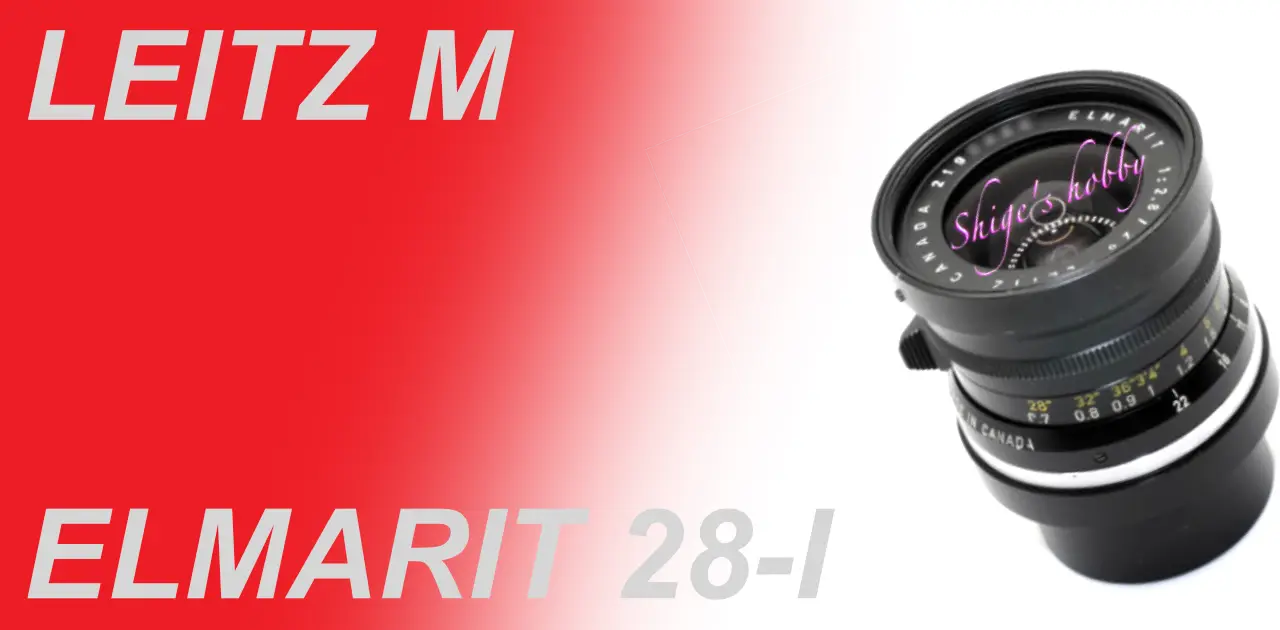
Review and Photo example of the ELMARIT M 28mm F2.8(1st).
Table of contents
Gallery
- Sample photo taken with the LEICA M9,M10 and M typ240.
Review
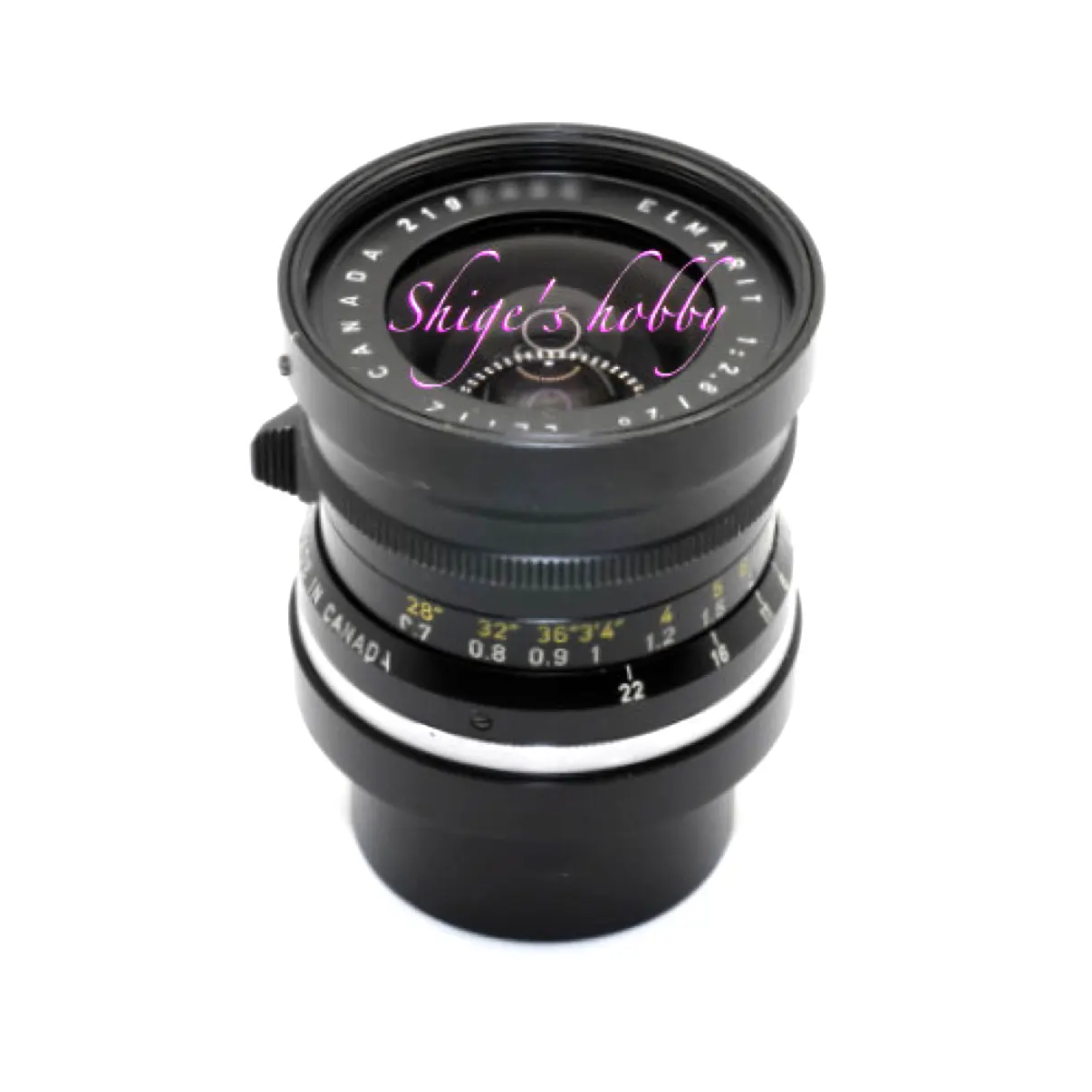
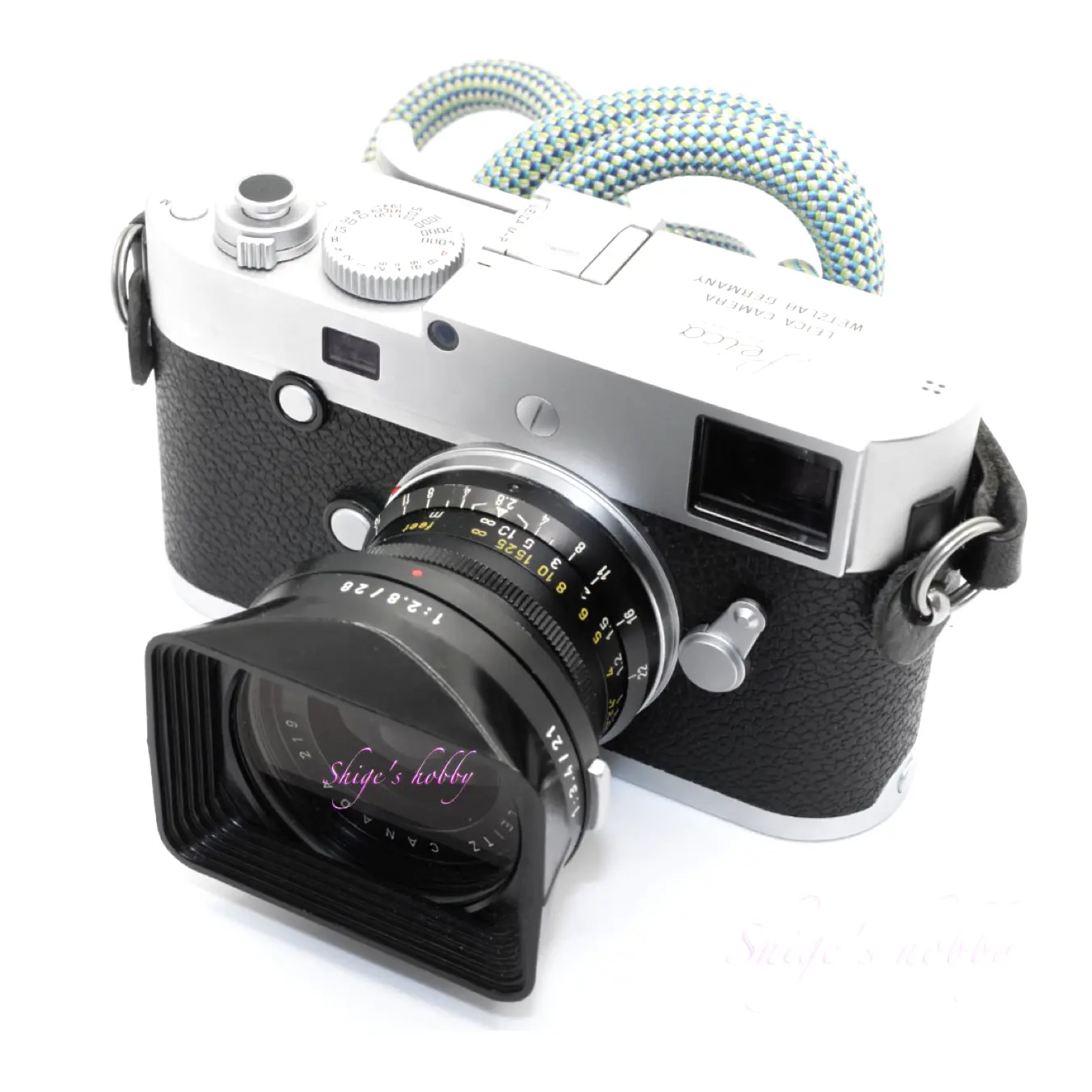
1.Overview
The ELMARIT M 28mm 1st is a Leica M-mount wide-angle lens released in 1964. Its production ended in 1966, with 3,200 units available on the market.
The lens is made up of 9 elements in 6 groups, and is nearly symmetrical, so the rear lens element penetrates into the camera. It has 8 aperture blades, and the minimum shooting distance is 0.7m.
The lens hood is 12501, which is the same as the Super Angulon-M 21/3.4 and the second-generation ELMARIT M 2.8/28.
Because the lens mount has an old structure, it is not compatible with Leica’s 6-bit lens recognition code modification.
An older lens with a focal length of 28mm than this lens is the SUMMARON with an L39 screw mount. However, because it has a dark maximum aperture of F5.6, it was difficult to use in the film era.
Developed as a brighter lens, this lens had a brighter maximum aperture of F2.8 and was named Elmarit.
2.Usability
The first Elmarit M 28mm, which is said to have nine elements, is one of the most popular M-mount lenses.
In terms of lens value, it is on par with the first Summicron 35mm F2, which is said to have eight elements.
The lens I have is 2197xxx, manufactured in Canada in 1966. The lens barrel is a little loose, but the lens is clear and the aperture works properly. The lens stopper is silver and the feet distance scale is yellow.
Depending on the production lot, there are lenses with red feet scales and black lens stoppers.
The feet scale can be changed in any way by simply coloring it, so it’s not something to be too particular about unless the original is guaranteed.
I sold most of my M-type lenses to collect Leica R-mount lenses, but I like this lens and still use it.
I have used 28mm lenses for Leica M mount other than the 4th generation ELMARIT-M and SUMMILUX 1.4/28mm (2nd generation, 3rd generation, 5th generation, SUMMARON 5.6/28, HEKTOR 6.3/28), and I like this lens’s exquisitely soft depiction the most among all 28mm lenses.
One thing to note about this lens is that since the rear part of the lens goes inside the camera, some cameras, such as HEXAR RF and LEICA CLE, may not get the correct exposure value when using automatic metering, and the image is often slightly underexposed.
Also, when using it with a mirrorless camera, care must be taken because the rear lens may come into contact with the wall near the sensor in cameras with narrow walls near the sensor. This is especially likely with cameras with small sensor sizes.
Also, attention should be paid to the display of the viewfinder frame. The claw length that determines the viewfinder frame is the shortest at 35/135mm, so on cameras with a 35mm viewfinder frame such as the Hexar RF or LEICA M6, the 35mm frame is displayed. This is because this lens was manufactured before the 28mm viewfinder frame was put into practical use, and it is assumed that an external viewfinder will be used.
What is interesting is that the MINOLTA CLE displays a 28mm viewfinder frame, which is because the viewfinder frame display setting of the MINOLTA CLE is different from that of the normal LEICA M, and the 28mm frame is set to the claw length that displays the 35/135mm of the M lens.
The first Elmarit M is a lens that is already over 50 years old, but there are no problems with its depiction, and it is no wonder that it is so popular. The position of the rear lens is close to the film surface, but perhaps because of the focal length of 28mm, there is no noticeable color cast, even when shooting with the LEICA M typ240, which is sensitive to color cast.
3.Summary
To sum up the ELMARIT M 28mm 1st, it is a lens that anyone who likes wide-angle lenses should try at least once.
No doubt my memories and biases are included in this review, but after using many 28mm lenses, I can say with confidence that this is the only 28mm lens I am satisfied with.
Specification and Competitor
In the first generation, the rear lens element is close to the film plane and extends far into the camera. From the second generation onwards, the design is retrofocus, with the rear lens element protruding less, allowing it to be used with a variety of cameras.
Sometimes we see descriptions saying that the first and second generations are exactly the same lens barrel, but the second generation lens barrel with stoppers is not exactly the same as the first generation. The base of the lens appears to be the same, but the front of the lens is about 3mm longer in the second generation lens barrel with stoppers. The comparison image below has been edited to look like it is from the side, as there was no photo of the lens taken from the side, but the scale has been maintained.
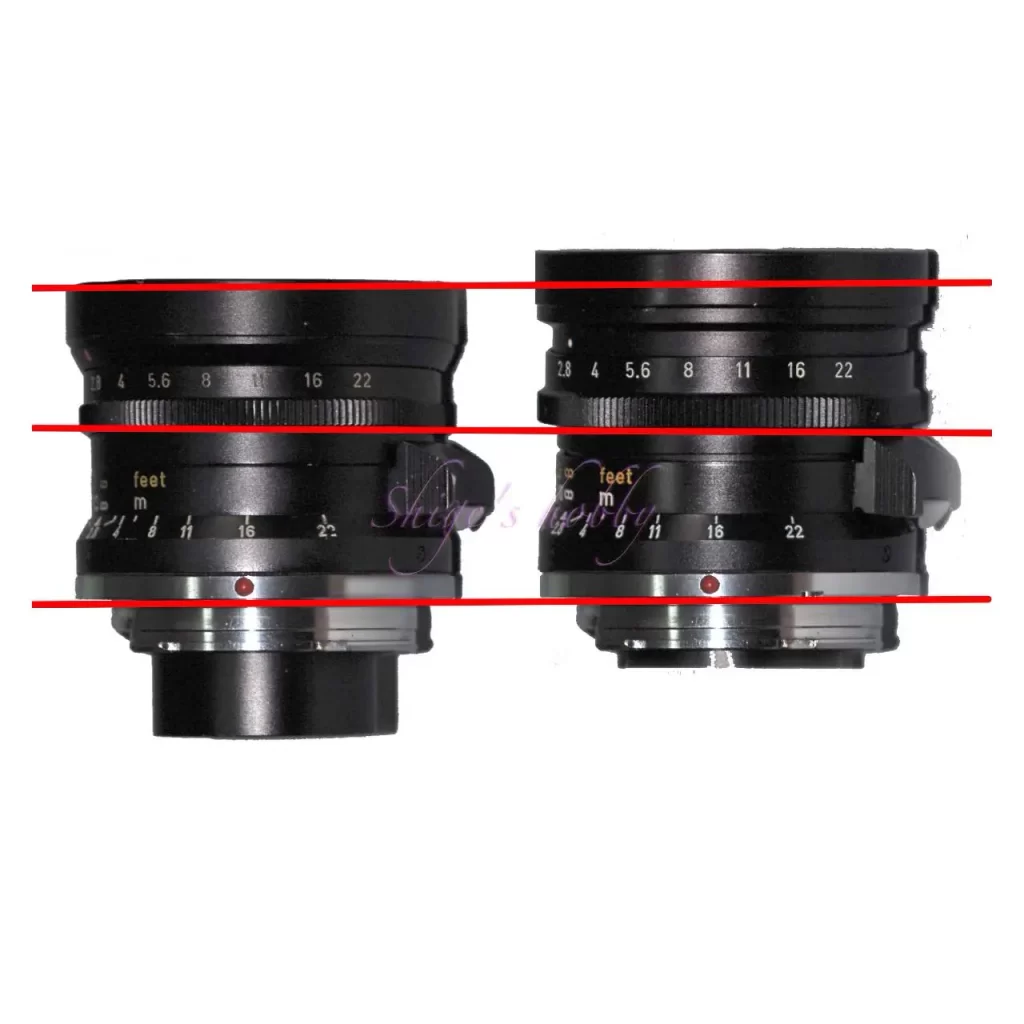
- The lens construction diagrams are quoted from each company’s materials, and the sizes have been adjusted by us, so they are not exact.
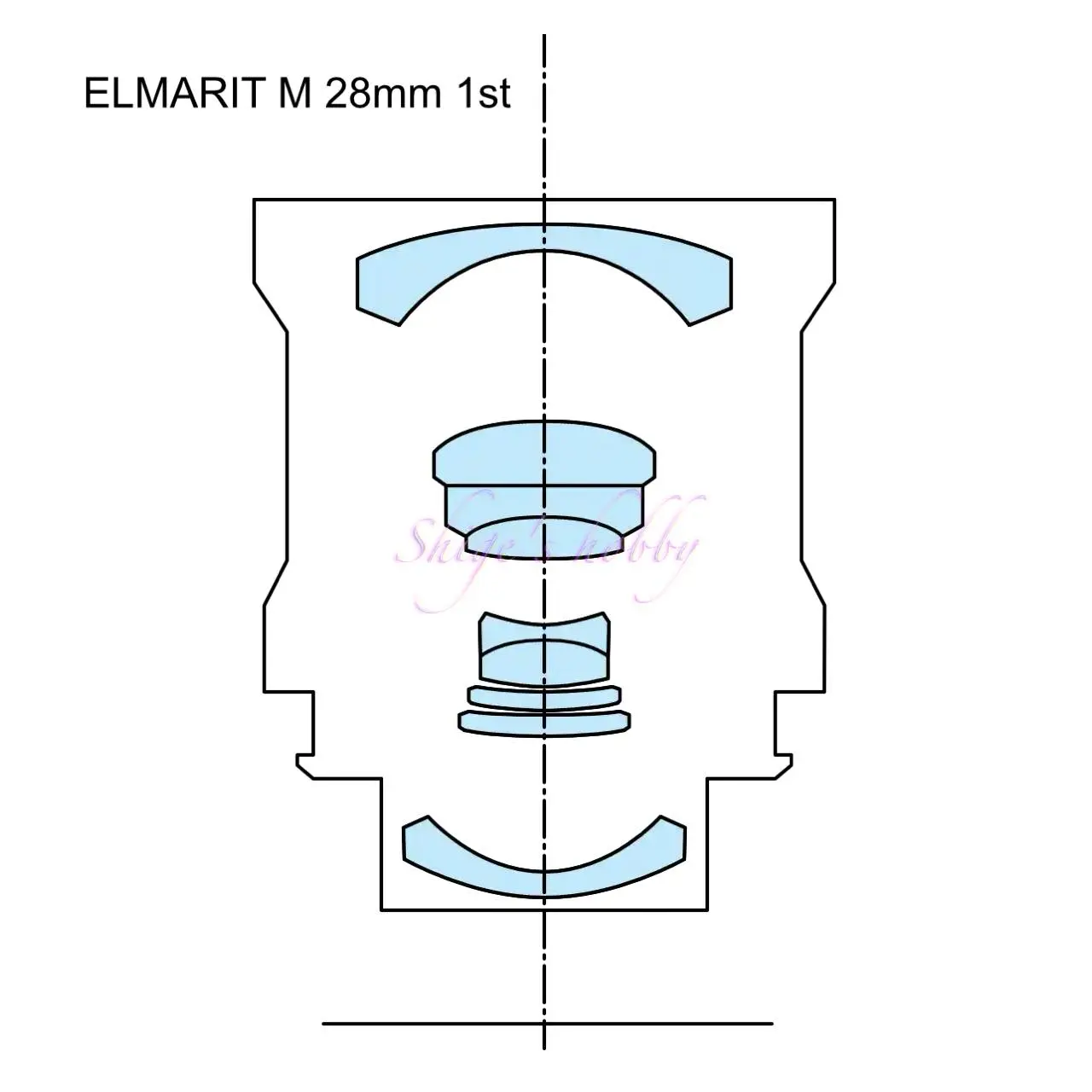
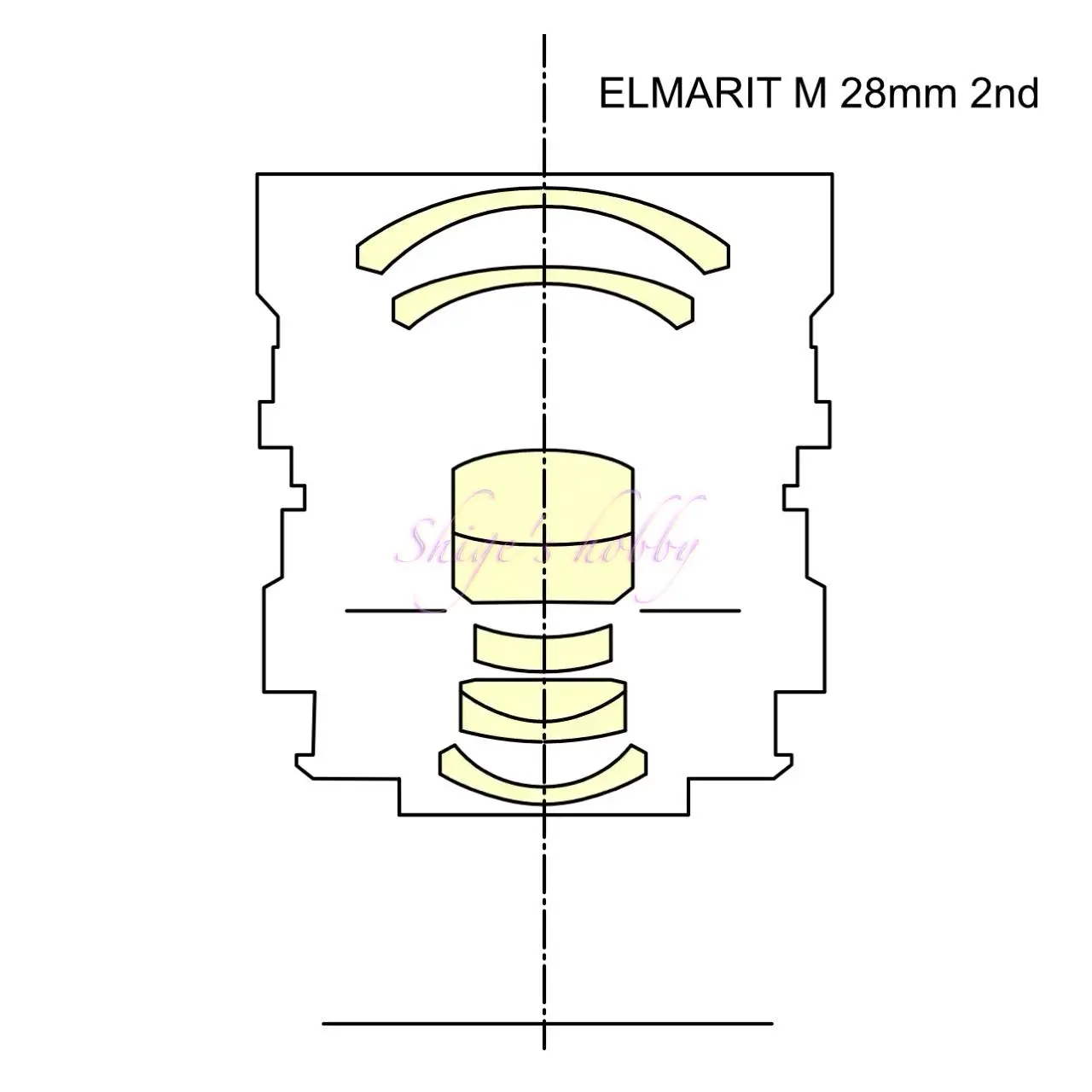
| 項目 | 1st | 2nd | 3rd | SUMMICRON | 4th | 5th(ASPH.) |
| focal length(mm) | 28 | ← | ← | ← | ← | ← |
| Maximum aperture | 2.8 | ← | ← | 2 | 2.8 | ← |
| Minimum aperture | 22 | ← | ← | 16 | 22 | ← |
| Leaf blade | 8 | 8 | 8 | 10 | 8 | 10 |
| Lens configuration | 9 elements in 6 groups | 8 elements in 6 groups | 8 elements in 6 groups | 9 elements in 6 groups | 8 elements in 7 groups | 8 elements in 6 groups |
| Minimum distance(m) | 0.7 | ← | ← | 0.7 0.4(New ver) | 0.7 | ← |
| Lens length(mm) | 42 | 45 | 48 | 40.8 | 41.4 | 30.7 |
| Lens max diameter(mm) | 52.5 | ← | ← | ← | ← | ← |
| Filter diameter(mm) | 48 or Series 7 | 48 | 49 | 46 | 46 | 39 |
| Weight(g) | 242 | – | – | 270 | 260 | 175 |
| Production Number | 3200 | 7,050 | 17,115 | over 5500 | 10,130 | over 40,000 |
| Release date | 1964-1966 | 1969-1978 | 1979-1991 | 2000〜 | 1992-2006 | 1993〜 |
Reference links
- Description page of ELMARIT-M 2.8/28-1st by LEICA Wiki
- Introduction page for the 2nd generation ELMARIT-M 2.8/28 (link in Shige’s hobby)
- Introduction page for the 3rd generation ELMARIT-M 2.8/28 (link in Shige’s hobby)
- Introduction page for the 5th generation ELMARIT-M 2.8/28 ASPH. (link in Shige’s hobby)
Update history
- 2025.4.21
- 2024.11.8
- 2024.02.21
- 2022.04.16

Leave a Reply